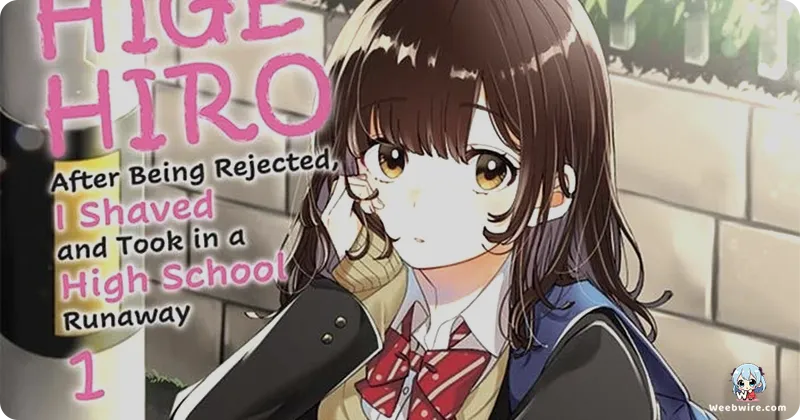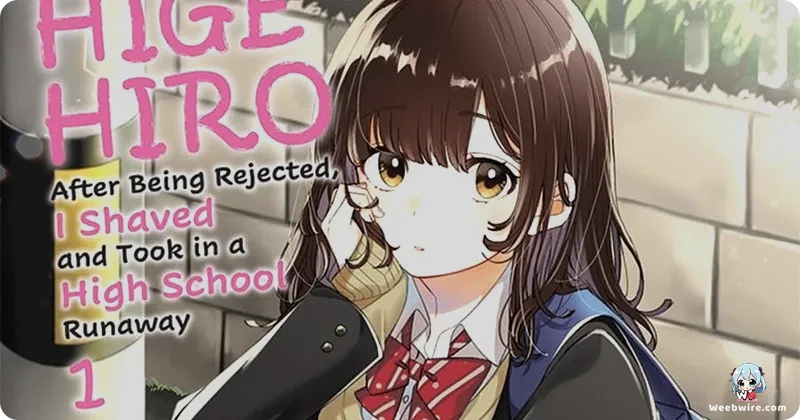Higehiro's True Colors: Unveiling the Unexpected Heart of a Controversial Anime

When Higehiro: After Being Rejected, I Shaved and Took in a High School Runaway burst onto the scene in April 2021, its bold and seemingly provocative title instantly ignited a firestorm of discussion. Many were quick to form judgments, presuming its narrative based solely on its sensationalized name. Yet, for those who ventured beyond initial impressions and immersed themselves in the world animated by project No.9, a profound truth quickly emerged: Higehiro was not the controversial romantic comedy or exploitative drama some had anticipated. Instead, it unfolded as a remarkably tender and deeply human story, championing themes of healing, genuine connection, and the quiet power of platonic care.
Subverting Expectations: A Story of Platonic Care
At its core, Higehiro masterfully subverts expectations. The premise, which sees salaryman Yoshida taking in the runaway high school student Sayu Ogiwara, swiftly establishes a refreshingly chaste and emotionally mature dynamic. The narrative makes it abundantly clear from the outset that Yoshida's intentions are far from romantic or predatory; rather, they stem from a selfless, almost paternal desire to provide a secure sanctuary and invaluable guidance to a vulnerable young girl. This crucial distinction often catches viewers off guard, revealing a story dedicated to the profound concepts of found family and personal recovery, standing in stark contrast to typical romantic entanglements. It is a testament to the series' remarkable storytelling prowess that it navigates such sensitive territory with unwavering grace and integrity, elevating it far beyond common genre tropes.
Yoshida's Nuanced Portrayal: The Unassuming Hero
Further illuminating its unexpected depth is the nuanced portrayal of Yoshida himself. Unlike many protagonists in similar setups, Yoshida is depicted not as a dashing hero or a brooding figure with a dark past, but as a refreshingly ordinary, even mundane, salaryman who simply stumbles into an extraordinary situation. His heroism lies not in grand, dramatic gestures, but in his unwavering consistency, profound empathy, and steadfast commitment to Sayu's well-being. He meticulously establishes boundaries, offers practical, grounded advice, and cultivates a stable environment, all while quietly grappling with his own emotional scars from a recent rejection. This grounded and realistic depiction of a man striving to do what is right, devoid of ulterior motives, serves as a vital anchor for the series' slice-of-life sensibilities, imbuing its narrative with an unexpected layer of maturity. It's a subtle yet potent affirmation that true kindness often blossoms from the most unassuming of actions.
Sayu's Journey: Healing from Trauma
Sayu Ogiwara's character arc is equally compelling, offering a realistic and often overlooked exploration of trauma and the arduous path to recovery. Sayu is not a passive damsel awaiting a magical fix; her past experiences are deeply scarring, and the series meticulously unpacks the psychological and emotional toll they have taken. The anime judiciously avoids sensationalizing her struggles, instead focusing on the slow, painstaking process of healing, confronting her past, and painstakingly rebuilding her sense of self-worth. Her journey is fraught with setbacks and difficult truths, yet it is through Yoshida's consistent, non-judgmental support that she gradually unearths the strength to face her inner demons. This unwavering commitment to portraying a believable healing process, rather than a simplistic resolution, lends profound weight and emotional resonance to the story, transforming it into a compelling drama about resilience and overcoming adversity.

The Found Family: Enriching the Narrative
Beyond the central duo, the richly developed ensemble cast plays a pivotal role in enriching the narrative and solidifying the subtle "found family" theme. Characters such as Yuzuha Mishima, Yoshida's ambitious junior colleague; Aoi Kanda, Sayu’s childhood friend; and even the enigmatic Airi Gotou, Yoshida's senior from whom he faced rejection, all contribute intricate layers to the story. They are not merely plot devices but fully realized individuals with their own lives, struggles, and arcs of growth that intersect profoundly with Yoshida and Sayu's journey. The evolving friendships, particularly between Sayu and her new high school acquaintances, further underscore the critical importance of community and genuine connection in the healing process. These relationships powerfully convey the idea that no one heals in isolation, and the unwavering support of others is indispensable in navigating life's most formidable challenges. The series beautifully illustrates how these connections, forged through shared vulnerability and mutual respect, become the bedrock upon which true recovery is built, offering a powerful message of hope and collective strength.
From Web Novel to Anime: A Journey of Quality
It is a lesser-known, yet significant, fact that the original Higehiro story began as a humble web novel published on the user-generated content platform Kakuyomu by author Shimesaba. Its burgeoning popularity organically led to its serialization as a light novel by Kadokawa Sneaker Bunko, graced with the stunning illustrations of booota. This remarkable trajectory, from a grassroots web novel to a highly anticipated anime adaptation, speaks volumes about the intrinsic appeal and exceptional quality of its storytelling. The anime adaptation, meticulously brought to life by project No.9, a studio celebrated for its adeptness with slice-of-life and romance titles like Bottom-tier Character Tomozaki and The Ryuo's Work is Never Done!, faithfully translated the novel's subtle emotional beats and intricate character nuances to the screen. Their delicate touch in handling the sensitive subject matter, combined with a keen focus on realistic character expressions and understated visual storytelling, ensured that the anime retained the integrity and mature tone of its source material. This meticulous adaptation process was paramount in delivering a series that defied initial judgments and resonated deeply with viewers seeking a story imbued with genuine heart and profound insight into human connection and recovery.
Ultimately, Higehiro stands as a shining example of an anime that triumphantly shed its controversial facade to unveil a remarkably human and surprisingly wholesome narrative. Its true genius resides in its unwavering commitment to exploring the intricate complexities of human relationships, the arduous yet rewarding path of personal healing, and the quiet, transformative power of selfless care. It is a series that genuinely encourages viewers to peer beyond initial impressions and discover the profound beauty hidden within its compelling and deeply resonant story. It serves as a powerful reminder that sometimes, the most impactful stories are those that challenge our preconceptions and reveal the unexpected depths of human kindness and resilience.
Credits
Higehiro: After Being Rejected, I Shaved and Took in a High School Runaway
Author
Shimesaba
Cover Art
booota
Studio
project No.9
Publisher
Kadokawa (Kadokawa Sneaker Bunko)
Producers





